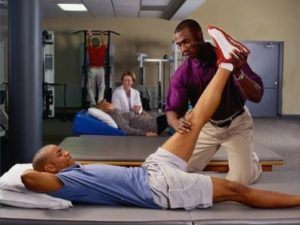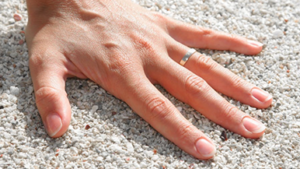Tenosynovitis

The condition known as Tenosynovitis is the inflammation of the synovium, which is the sheath that supports a tendon. While the two conditions commonly coexist, tendonitis—which describes the inflammation of the tendon itself—and tenosynovitis are not the same.
It’s not always clear what causes the inflammation in tenosynovitis, but common causes include:
- Inflammatory disorders such rheumatoid arthritis
- Infection
- Strain
- Overuse
- Injury
Any tendon sheath can be compromised by tenosynovitis, however it usually affects the hands, wrists, and feet due to the length of the tendons across those joints. A few examples of tenosynovitis symptoms are:
- Pain and trouble moving a joint
- Increased fluid in the area of the damaged joint
- Redness that extends the entire length of the tendon
- Tenderness or soreness around a joint

The most common type of tenosynovitis is known as de Quervain’s tenosynovitis, and it is characterized by swelling of the thumb tendon sheath. Those who suffer from de Quervain’s disease may experience a sticky sensation in their thumb and wrist when attempting to grab objects. Some of de Quervain’s risk factors include the following:
- Age: The most common age range for de Quervain’s tenosynovitis is 30 to 50 years old.
- Sex: Women are more likely than males to develop De Quervain’s tenosynovitis.
- Pregnancy: There has been a correlation found between De Quervain’s and pregnancy.
- Being a parent: Tenosynovitis is associated with the movement involved in picking up a child.
- Careers and interests: Repetitive motion-based activities like gardening and racquet sports may be linked to de Quervain’s tenosynovitis.
- Past injury: Tendon movement may be restricted by scar tissue from a prior injury in the wrist area.
Orthopedists will apply pressure to the tendon to determine whether tenosynovitis is the cause of pain. A patient can undergo the Finkelstein test, which entails bending the thumb over the palm of the hand while bending the remaining fingers down over the thumb, with an orthopedist, specifically for de Quervain’s tenosynovitis. The patient then rotates their wrist in the direction of their pinky finger; if this produces any pain, de Quervain’s is probably to blame.
Tenosynovitis Treatment Options
 Pain and inflammation reduction are the main goals of tenosynovitis treatment. This can be assisted by resting and keeping the tendons as still as you can, as well as using a hot or cool pack. Additional alternatives for treatment could be:
Pain and inflammation reduction are the main goals of tenosynovitis treatment. This can be assisted by resting and keeping the tendons as still as you can, as well as using a hot or cool pack. Additional alternatives for treatment could be:
Physical Therapy. Coupled with rest and activity modification, physical therapy can help lessen the effects of tenosynovitis.
Brace or splint: In order to lessen movement, patients might want to think about wearing a brace or splint.
Pain relievers: Nonsteroidal anti-inflammatory medications (NSAIDs), such as ibuprofen, are effective at reducing inflammation and relieving pain.
Corticosteroids: Corticosteroids can potentially reduce inflammation when injected directly into the sheath. This is the sole course of action available to people whose tenosynovitis is not due to an infection.
Surgery: Emergency surgery may be necessary to remove the fluid surrounding the tendon in patients with tenosynovitis caused by an infection. When patients with persistently inflamed tendons have tried every conservative therapy option, surgery to reduce the pressure on the tendons may also be considered.
The majority of those with tenosynovitis recover completely after 4 to 6 weeks of treatment. Patients with tenosynovitis run the danger of developing stiffness in the afflicted joint and irreversible restriction of the tendon if they do not receive treatment. Tenosynovitis can be avoided by avoiding repetitive motions. It is important for patients to take proper care of any wounds on their hands, wrists, or feet.
Studies have shown that physical therapy, including strengthening exer for all forms of tendonitis can help to reduce pain and strengthen the muscles around the damaged tendon to help avoid similar injuries in the future. A physical therapist may recommend strengthening exercises and adjusting daily activities to help avoid aggravating the tendon going forward.
